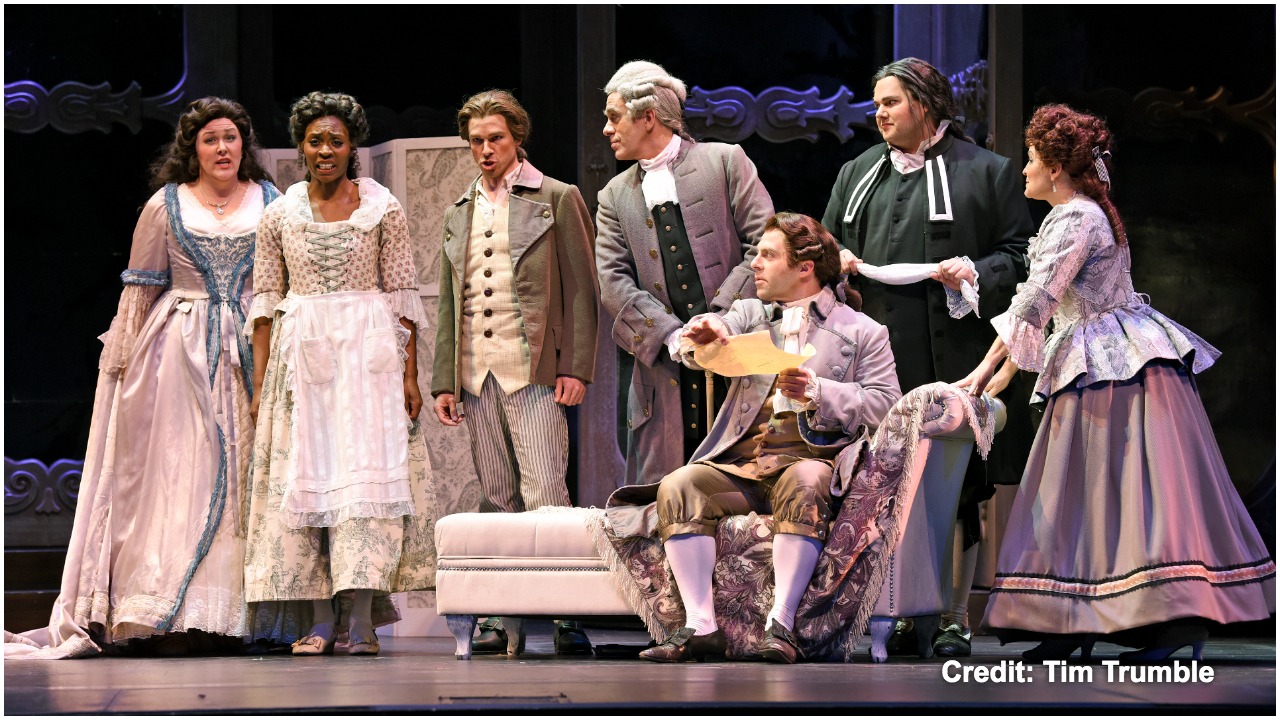

The Countess, Susanna and Figaro plan to shame the Count and expose his scheming ways. The count is chasing Susanna, a servant girl, about to be married to Figaro, the Count's valet. The plot: the Countess of Almaviva is married to the raunchy, ageing, womanising Count.

The action takes place in the palace of Count Almaviva in Seville, Spain. Plus, this is the beginning of the collaboration between Mozart and Da Ponte. Nevertheless, the opera still shows the aristocracy as strongly clinging to their privileges and the third state as struggling to survive. Da Ponte’s libretto was based on Beaumarchais’s The Marriage of Figaro, however, the playful atmosphere is preserved whilst the satirical elements and the criticism toward society are considerably reduced and toned down due to censorship. This is one of the best known Mozart’s operas. This most performed opera worldwide, about the wedding day of Figaro and Susanna, is a funny and intriguing romp. Wolfgang Amadeus Mozart wrote this comic opera in 1786 and it has been produced and enjoyed around the world ever since. Read our full review of Utah Opera’s The Marriage of Figaro here."Le nozze di Figaro", or The Marriage of Figaro is one of the finest operas ever written.

In fact, it is the song played by Wonka for the musical lock to the candy room in the 1971 film Willy Wonka And The Chocolate Factory. Less debatable is that Mozart’s overture is perhaps the most well-known piece of music from the opera and is often played independently as a concert piece. Whether this edict was followed is cause of some debate. History supports that there were so many encores during the first several performances of The Marriage of Figaro that Roman Emperor Joseph II decreed that “no piece for more than a single voice is to be repeated” in order to keep the length of the performance within reason. (He also conducted at least one performance in a later production the same year in Prague.) The Marriage of Figaro had its world premiere at Burgtheater, Vienna where Mozart himself directed the first two performances from the keyboard. Mozart was paid handsomely (450 florins) for the work while Da Ponte made 200 florins after completing the libretto in six weeks. The opera was the first of three collaborations between Mozart and Da Ponte followed by Don Giovanni and Così fan tutte. The four-act opera was composed by Wolfgang Amadeus Mozart, with an Italian libretto written by Lorenzo Da Ponte based on Beaumarchais’ famous French comedy, Le Mariage de Figaro, in 1786. One of the most frequently performed comic operas, The Marriage of Figaro ( Le nozze di Figaro) tells the timeless tale of love and fidelity-recounted in a single “day of madness” in the palace of Count Almaviva, near Seville-while continuing the plot of The Barber of Seville.


 0 kommentar(er)
0 kommentar(er)
